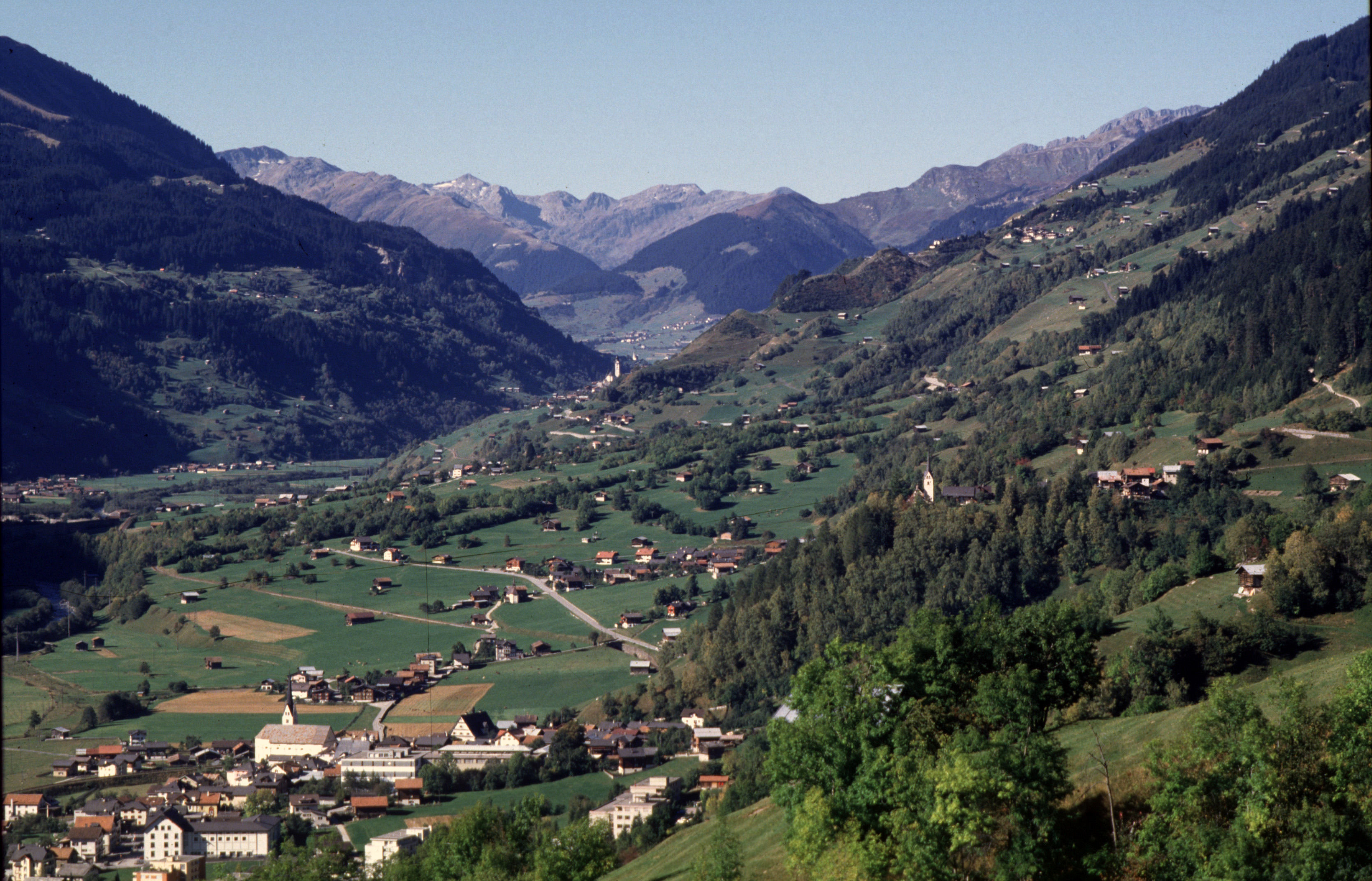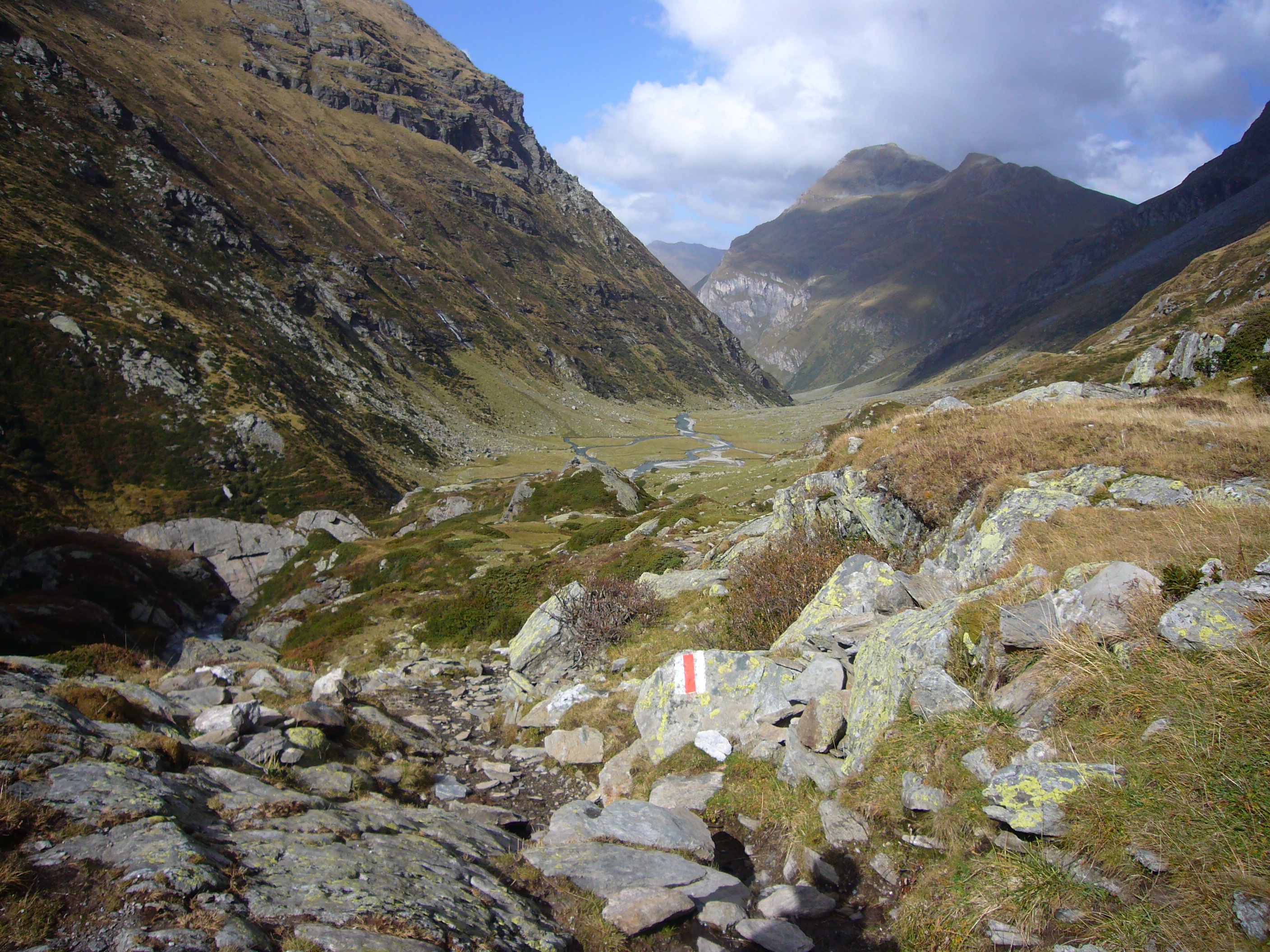Mountain villages look for a workable future

“A bejewelled crescent at the heart of a continent” is how a booklet issued by the eight-nation Alpine Convention describes the Alps. Beautiful, certainly – many people love to visit them – but how many want to live there?
In Switzerland, for example, only around one in seven inhabitants live in the Alps, even though nearly two thirds of Swiss territory is considered alpine. In 1800, the figure was more than one in five.
A topic at a recent conference was how to boost employment opportunities in the alpine region. The main theme of Alp Week held in the small Italian-speaking town of Poschiavo in the southeastern canton of Graubünden was “renewable Alps”. The event brought together experts from all alpine nations.
“People who live in the rural areas of the Alps like being close to nature, the unspoiled environment and have a higher quality of life,” Guido Plassmann, director of the Alpine Network of Protected Areas (ALPARC), told swissinfo.ch.
“But: being near a town is certainly an important factor. Thirty-five minutes, perhaps an hour, maximum,” he added. “For some it’s in order to commute to work, but it’s also because of all the things there are to do in towns.”
How to keep people in the mountain areas by offering them economic opportunities while not destroying the environment is the “64,000-dollar question”, he admitted.
Global connections
It is not surprising that one major factor in the alpine economy has long been tourism – and still is – but in today’s world there are alternatives.
Paradoxically, it might seem, globalisation and the internet are opening up many possibilities.
One important source of employment is small and medium-sized enterprises (SMEs).
While industry in the larger alpine villages is not new, the traditional ones are disappearing or restructuring. Of those that remain or are moving in, many are no longer resource based: globalisation offers new chances and challenges, as Heike Mayer, professor of economic geography at Bern University, explained.
“SMEs are driven to innovate and use technology, so they need to stay in touch with new ideas,” she said.
“Those operating in global markets are connected to other regions of the world, through suppliers, customers, relationships with universities, perhaps. Being connected is an important part.”
Innovative
One person helping them to keep connected and to access external know-how is Melanie John of OpenAlps, an international project led by the Schwarzwald-Baar-Heuberg chamber of trade and industry in southern Germany.
“The idea is to be able to get the right innovation to the right people faster,” she told swissinfo.ch.
And while many of the firms are already innovative, in a globalised world the pressures are greater, and no business can afford to stand still, she warned.
“It’s not that our project is going to have such a huge effect that without it they would all leave. But we want to support the economy on the ground, to preserve jobs and create new ones.”
The kinds of business covered vary widely and depend on the region; they include medical equipment manufacturers, car dealers and tool makers.
What hope for the future?
The mountain regions have to offer the upcoming generation reasons to stay.
Moritz Schwarz is a very politically aware school leaver from Innsbruck. He sees education as the best hope for keeping young people in the Alps: an educated population can be employed by new companies moving to the area with sustainable projects.
He and his younger colleague, 16-year-old Isabella Hilber, both of whom have attended the Youth Parliament of the Alpine Convention, which brings together young people of the eight alpine nations, are passionate about the future of the region.
But although the youth parliament was the brainchild of teachers at their school, Hilber admitted that most of her classmates were not particularly interested. And despite her love of the mountains, she sees herself moving to Vienna or even Germany to study.
Nevertheless, those who do leave for study or work can still do their bit, according to Silva Semadeni, a member of the Swiss parliament. She grew up in Poschiavo, close to the Italian border, but now lives in Chur, the capital of Graubünden.
“It’s true that there isn’t work for everyone here, so many have to leave. But there are lots of ways in which people who have moved to urban areas can help promote the interests of the mountain regions,” she told swissinfo.ch.
A matter of perspective
But does it actually matter whether young people stay in the mountains?
In the short term, it certainly does, as Franz-Ferdinand Türtscher, council chairman of the small commune of Sonntag in Austria’s Vorarlberg, explained to swissinfo.ch: if people leave, there is no one to keep up the social and political life of the village. And that would set up a vicious circle.
The village clubs are very important: it’s one reason why commuters like to come home every evening rather than live where they work, Türtscher said. The commune has 750 inhabitants – and 50 of them belong to the orchestra, for example. The standard is high, and that in turn attracts new members.
“We do still have some young people willing to take on posts in clubs and societies or to stand for political office, but I wouldn’t like to say what it will be like in 10 to 15 years,” he said.
“I do hear some people – particularly young people with more education – saying they can’t really find their place there,” he said.
Guido Plassmann is more optimistic about that aspect. “Young people often leave, they want to live in a town, see something new – but they often come back.”
But when asked why it actually matters whether people live in the mountains or not, Plassmann took a longer-term view.
“This is to do with our picture of the Alps. I think our generation can hardly imagine the Alps becoming all overgrown, with only forests there. Whether future generations can imagine such a thing is a different matter,” he said.
“It’s not a matter of positive and negative. Of course what is positive for us is the environment that is part of our culture, and obviously we want to keep it. But that’s looking from our perspective, as human beings. Nature’s perspective may be quite different.”
The AlpWeek was held in the southern Swiss town of Poschiavo to coincide with the conference of member states of the Alpine Convention.
It brought together experts and members of the public to discuss ways to “renew” the mountain regions through sustainable development.
The groups organising it were:
The Alpine Convention, an international treaty between the Alpine countries as well as the EU, aimed at promoting sustainable development. Switzerland is the current president.
Alparc, which brings together hundreds of protected areas in the Alps.
Iscar, the International Scientific Committee on Research in the Alps
Club Arc Alpin, which brings together associations active in mountaineering, nature protection and spatial planning.
Alliance in the Alps, an association of local authorities and regions.
Cipra, which campaigns for the protection and sustainable development of the Alps.
The Valposchiavo tourist office
The alpine arc stretches from France in the west to Slovenia in the east. The other alpine nations are Austria, Germany, Italy, Liechtenstein, Monaco, and Switzerland.
The Alps cover an area of 190,000 km² and are home to around 14 million people, although population density varies hugely from one region to the next.
The major rivers of Europe – Danube, Rhine, Rhone and Po – have their sources in the Alps, or are fed by rivers originating there.
The Alps also a major tourist region, with an estimated 120 million guests per year.
Human activity has helped shape the landscape for more than 1,000 years, at first through agriculture, livestock raising, forestry and mining.
Tourism started about 200 years ago; winter tourism is about 100 years old and has entailed the construction of facilities like ski lifts as well as hotels and roads.
The alpine area is vital for the production of hydroelectricity, regarded as a CO2-free, renewable source of energy. A number of valleys have been flooded by the building of dams.
Nearly two thirds of Swiss territory is considered alpine.
In 1800 the alpine population accounted for 22.6% of the Swiss population; in 1990 the figure was 14.6%.

In compliance with the JTI standards
More: SWI swissinfo.ch certified by the Journalism Trust Initiative










You can find an overview of ongoing debates with our journalists here . Please join us!
If you want to start a conversation about a topic raised in this article or want to report factual errors, email us at english@swissinfo.ch.